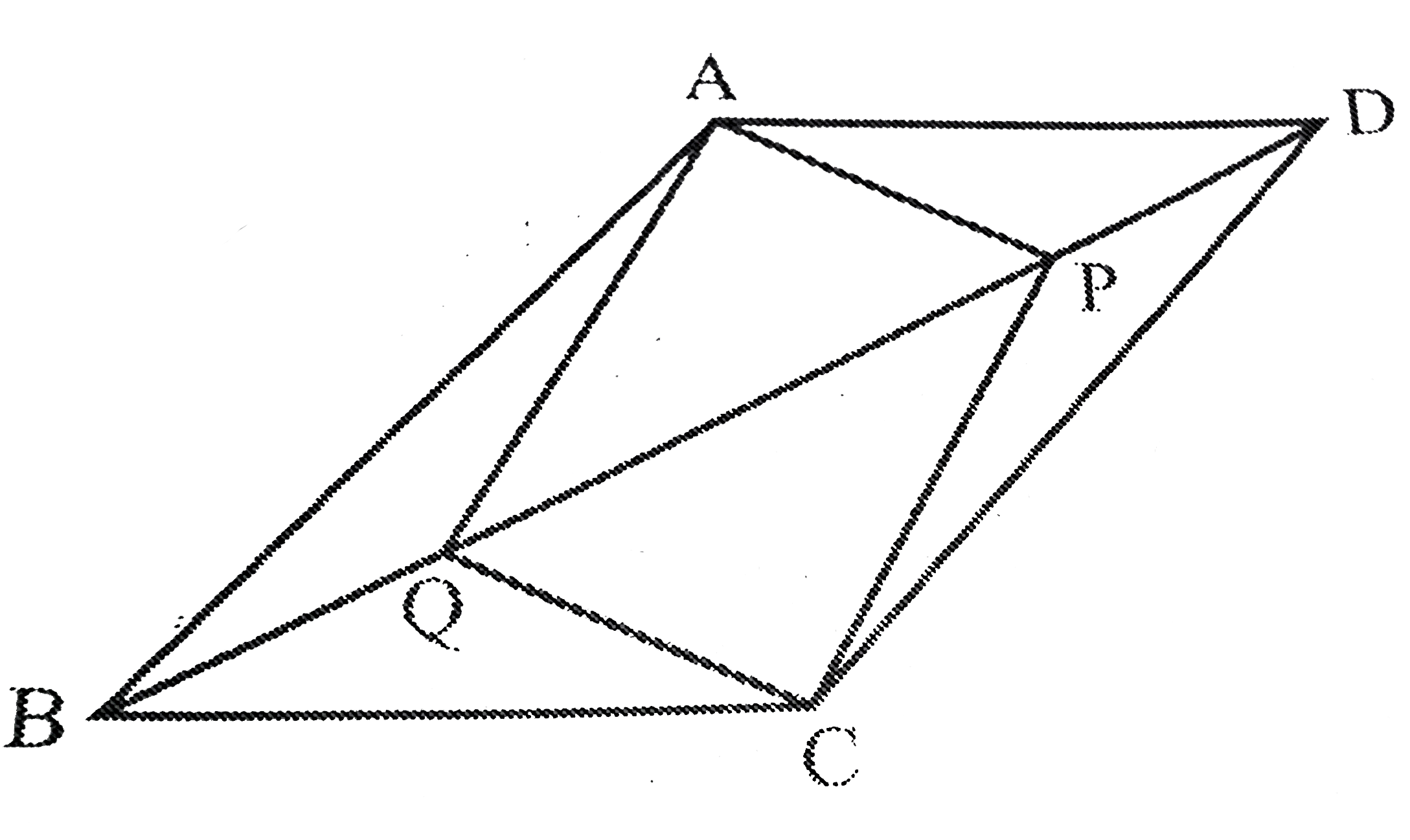If adjB=A,|P|=|Q|=1,then.adj(Q−1BP−1) is a.PQ b. QAP c. PAQ d. PA−1Q
To solve the problem, we need to find the value of adj(Q−1BP−1) given that adj(B)=A and |P|=|Q|=1.
1. Use the Property of Adjoint:
We know that for any matrices X,Y,Z:
adj(XYZ)=adj(Z)⋅adj(Y)⋅adj(X)
Applying this property, we can write:
adj(Q−1BP−1)=adj(P−1)⋅adj(B)⋅adj(Q−1)
2. Find the Adjoint of Inverses:
The adjoint of an inverse matrix can be expressed as:
adj(A−1)=adj(A)|A|
Therefore, we have:
adj(P−1)=adj(P)|P|andadj(Q−1)=adj(Q)|Q|
3. Substituting Determinants:
Given that |P|=1 and |Q|=1, we can simplify:
adj(P−1)=adj(P)andadj(Q−1)=adj(Q)
4. Substituting the Value of Adjoint of B:
Since adj(B)=A, we can substitute this into our equation:
adj(Q−1BP−1)=adj(P)⋅A⋅adj(Q)
5. Final Expression:
We can now express the adjoint of P and Q using their properties. Since we don't have specific values for adj(P) and adj(Q), we denote them as P and Q respectively:
adj(Q−1BP−1)=PAQ
Conclusion:
Thus, the final answer is:
adj(Q−1BP−1)=PAQ
We know that for any matrices X,Y,Z:
adj(XYZ)=adj(Z)⋅adj(Y)⋅adj(X)
Applying this property, we can write:
adj(Q−1BP−1)=adj(P−1)⋅adj(B)⋅adj(Q−1)
The adjoint of an inverse matrix can be expressed as:
adj(A−1)=adj(A)|A|
Therefore, we have:
adj(P−1)=adj(P)|P|andadj(Q−1)=adj(Q)|Q|
Given that |P|=1 and |Q|=1, we can simplify:
adj(P−1)=adj(P)andadj(Q−1)=adj(Q)
Since adj(B)=A, we can substitute this into our equation:
adj(Q−1BP−1)=adj(P)⋅A⋅adj(Q)
We can now express the adjoint of P and Q using their properties. Since we don't have specific values for adj(P) and adj(Q), we denote them as P and Q respectively:
adj(Q−1BP−1)=PAQ
Thus, the final answer is:
adj(Q−1BP−1)=PAQ
Similar Questions
Knowledge Check
If p+q=12 and pq = 35, then 1p+1q=
A1/5B1/7C1/35D12/35
In Figure, if quadrilateral PQRS circumscribes a circle, then PD+QB= (a)PQ (b) QR (c) PR (d) PS
View SolutionIf P=[122−1]andQ=[1021] then compute :
(i) P2−Q2 (ii) (P+Q)(P−Q)
Is (P+Q) (P-Q) =P2−Q2 true for matrix algebra?
View SolutionIn a right triangle ABC right-angled at B, if PandQ are points on the sides ABandAC respectively, then (a)AQ2+CP2=2(AC2+PQ2) (b)2(AQ2+CP2)=AC2+PQ2 (c)AQ2+CP2=AC2+PQ2 (d)AQ+CP=12(AC+PQ).
View SolutionIf in an A.P., the pth term is q and (p+q)th term is zero then the qth term is
a.−p b. p c. p+q d. p−q
View SolutionIn parallelogram ABCD, two points P and Q are taken on diagonal BD such that DP=BQ. Show that:
(i) ΔAPD≅ΔCQB
(ii) AP=CQ
(iii) ΔAQB≅ΔCPD
(iv) AQ=CP
(v) APCQ is a parallelogram.

View SolutionIf P and Q are symmetric matrices and PQ=QP then which of the following is/are true (A) QP−1=P−1Q (B) PQ is skew symmetric (C) P−1Q is symmetric (D) both (a) and (c)
View SolutionIf A=(pq01), then show that A8=⎛⎜⎝p8q(p8−1p−1)01⎞⎟⎠
View Solution
